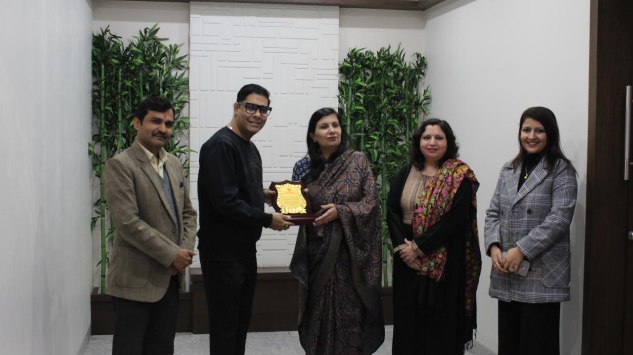On February 5, 2025, SIBM Noida had the privilege of hosting Mr. Aditya Joshi, Chief Operating Officer of SA Technologies Inc., for a captivating session titled “Artificial Intelligence – The Future of Work.” The event drew an enthusiastic audience comprising students, faculty, and professionals eager to gain insights into the rapidly evolving landscape of AI and its impact on the modern workplace.
Mr. Joshi delivered a session that was both enlightening and thought-provoking. He shared a blend of innovative ideas, practical applications, and real-world case studies that demonstrated how artificial intelligence is not just reshaping the way we work but also redefining job roles, skills, and organizational structures.
One of the key highlights of the session was Mr. Joshi’s emphasis on the collaboration between human intelligence and AI systems. He underscored the importance of adaptability, continuous learning, and digital fluency as critical skills for future professionals. According to him, while AI will automate many routine tasks, it will also create opportunities for more creative, strategic, and interpersonal roles that machines cannot replicate.
Mr. Joshi also addressed the ethical dimensions of AI, advocating for responsible innovation and the need for robust governance frameworks to ensure transparency and fairness in AI-driven decisions. His insights sparked a lively interaction with the audience, who posed thoughtful questions about job security, skill development, and the role of AI in different industries.
The session concluded with Mr. Joshi encouraging students to embrace technological change with curiosity and confidence. His words left a lasting impact on the attendees, who walked away with a deeper understanding of the transformative potential of AI and its growing relevance in their future careers.
The event was a resounding success, reflecting SIBM Noida’s commitment to bringing industry leaders to the campus to bridge the gap between academia and the corporate world.

